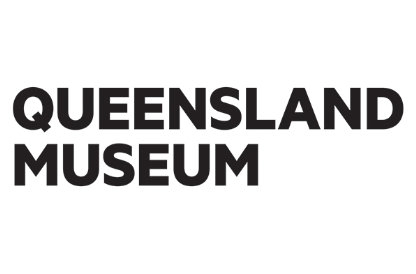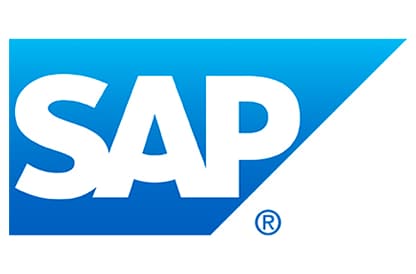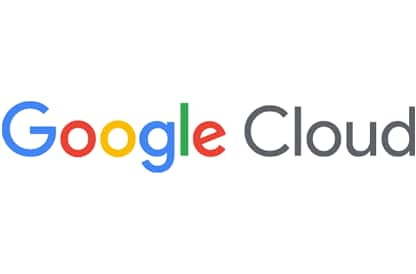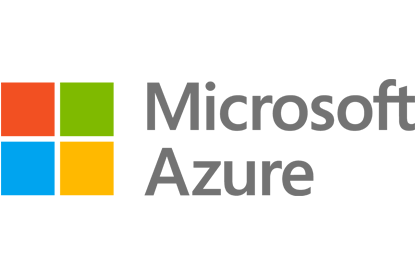Why OpenText
Why OpenText
Overview Why OpenText
OpenText brings decades of expertise to help you unlock data, connect people and processes, and fuel AI with trust
Manage and connect data
Unify data seamlessly across your enterprise to eliminate silos, improve collaboration, and reduce risks
AI-ready information
Get AI-ready and transform your data into structured, accessible, optimized information
Built-in security and compliance
Meet regulatory and compliance requirements and protect your information throughout its lifecycle
Empowering people
Overview Empowering people
OpenText helps people manage content, automate work, use AI, and collaborate to boost productivity
Customers
See how thousands of companies around the world are succeeding with innovative solutions from OpenText
Employees
Our people are our greatest asset; they are the life of the OpenText brand and values
Corporate Responsibility
Learn how we aspire to advance societal goals and accelerate positive change
Partners
Find a highly skilled OpenText partner with the right solution to enable digital transformation
How we compare
Content Management
Service Management
Deploy anywhere
Overview Deployment options
Explore scalable and flexible deployment options for global organizations of any size
Sovereign cloud
Local control. Global scale. Trusted AI
Private cloud
Your cloud, your control
On-premises
Free up resources, optimize performance and rapidly address issues
Public cloud
Run anywhere and scale globally in the public cloud of your choice
AI leadership
Overview Aviator AI
See information in new ways
OpenText™ Aviator AI
AI that understands your business, your data, and your goals
OpenText™ MyAviator
Say hello to faster decisions. Your secure personal AI assistant is ready to get to work
OpenText™ Business Network Aviator
Gain better insights with generative AI for supply chains
OpenText™ Content Aviator
Power work with AI content management and an intelligent AI content assistant
OpenText™ Cybersecurity Aviator
Improve your security posture with AI cybersecurity and agile threat detection
OpenText™ DevOps Aviator
Enable faster app delivery, development, and automated software testing
OpenText™ Experience Aviator
Elevate customer communications and experiences for customer success
OpenText™ Service Management Aviator
Empower users, service agents, and IT staff to find the answers they need
Aviator AI
Overview Aviator AI
See information in new ways
OpenText™ Aviator AI
AI that understands your business, your data, and your goals
OpenText™ MyAviator
Say hello to faster decisions. Your secure personal AI assistant is ready to get to work
OpenText™ Business Network Aviator
Gain better insights with generative AI for supply chains
OpenText™ Content Aviator
Power work with AI content management and an intelligent AI content assistant
OpenText™ Cybersecurity Aviator
Improve your security posture with AI cybersecurity and agile threat detection
OpenText™ DevOps Aviator
Enable faster app delivery, development, and automated software testing
OpenText™ Experience Aviator
Elevate customer communications and experiences for customer success
OpenText™ Service Management Aviator
Empower users, service agents, and IT staff to find the answers they need
Analytics
Overview Analytics
Predict, act, and win with real-time analytics on a smarter data platform
OpenText™ Aviator Search(AI)
Give users access to the answers they need, faster and easier, with multi-repository AI-based search that lets you contextualize everything from clicks to conversations
Business Network
Overview Business Network
Connect once, reach anything with a secure B2B integration platform
Content
Overview Content
Reimagine knowledge with AI-ready content management solutions
OpenText™ Content Aviator(AI)
Supercharge intelligent workspaces with AI to modernize work
Cybersecurity
Overview Cybersecurity
Integrated cybersecurity solutions for enterprise protection
OpenText Cybersecurity for SMBs & MSPs
Purpose built data protection and security solutions
OpenText™ Cybersecurity Aviator(AI)
Reinvent threat hunting to improve security posture with the power of agile AI
DevOps
Overview DevOps
Ship better software—faster—with AI-driven DevOps automation, testing, and quality
Experience
Overview Experience
Reimagine conversations with unforgettable customer experiences
Observability and Service Management
Overview Observability and Service Management
Get the clarity needed to cut the cost and complexity of IT operations
OpenText™ Service Management Aviator(AI)
Redefine Tier 1 business support functions with self-service capabilities from private generative AI
APIs
Overview APIs
Build custom applications using proven OpenText Information Management technology
OpenText™ API Services
Build it your way with OpenText Cloud APIs that create the real-time information flows that enable custom applications and workflows
Device and Data Protection
Overview Device and Data Protection
Protect what matters, recover when it counts
Unified Endpoint Management Tools
- OpenText™ Endpoint Management
- OpenText™ ZENworks Suite
- OpenText™ ZENworks Service Desk
- OpenText™ ZENworks Configuration Management
- OpenText™ ZENworks Endpoint Security Management
- OpenText™ ZENworks Full Disk Encryption
- OpenText™ ZENworks Endpoint Software Patch Management
- OpenText™ ZENworks Asset Management
Solutions
Trusted Data & AI
Overview Trusted Data & AI
Secure information management meets trusted AI
OpenText AI Data Platform
A unified data framework to elevate data and AI trust
OpenText Aviator Studio
A place where you can build, deploy, and iterate on agents in your data's language
OpenText Discovery
A set of tools to help ingest data and automate metadata tagging to fuel AI
OpenText Data Compliance
A suite of services and APIs that make governance proactive and persistent
OpenText Aviator AI Services
Professional services experts who help you on your AI journey
Information Reimagined
Overview Information Reimagined
Get greater visibility and sharper insights from AI-driven information management. Ready to see how?
Knowledge reimagined
Transform daily work with enterprise content management powered by AI
Service Management reimagined
Cut the cost and complexity of IT service management, AIOps, and observability
Connections reimagined
AI-powered B2B integration for supply chain success
Conversations reimagined
Drive value, growth, and loyalty with connected customer experiences
Engineering reimagined
Agile development and software delivery? It only seems impossible
Security reimagined
Cybersecurity for the Enterprise
Decisions reimagined
Unlock insights with AI data analytics
Artificial Intelligence
Overview Aviator AI
See information in new ways
OpenText™ Aviator AI
AI that understands your business, your data, and your goals
OpenText™ MyAviator
Say hello to faster decisions. Your secure personal AI assistant is ready to get to work
OpenText™ Business Network Aviator
Gain better insights with generative AI for supply chains
OpenText™ Content Aviator
Power work with AI content management and an intelligent AI content assistant
OpenText™ Cybersecurity Aviator
Improve your security posture with AI cybersecurity and agile threat detection
OpenText™ DevOps Aviator
Enable faster app delivery, development, and automated software testing
OpenText™ Experience Aviator
Elevate customer communications and experiences for customer success
OpenText™ Service Management Aviator
Empower users, service agents, and IT staff to find the answers they need
Industry
Overview Industry solutions
Improve efficiency, security, and customer satisfaction with OpenText
Energy and resources
Transform energy and resources operations with cloud, cybersecurity, and AI
Financial services
Boost customer experience, compliance, and efficiency with AI
Government
Reimagine your mission with government-secure information management
Healthcare and life sciences
Improve care delivery and patient engagement with AI-powered solutions
Legal
Modernize legal teams with automated, AI-powered legal tech solutions
Manufacturing
Modernize manufacturing operations and logistics to reduce costs and ensure compliance
Retail and consumer goods
Enhance consumer engagement with omnichannel retail solutions and AI
Enterprise Application
Overview Solutions for Enterprise Applications
Run processes faster and with less risk
Services
Services
Overview Services
Achieve digital transformation with guidance from certified experts
Professional Services
Modernize your information management with certified experts
Customer Success Services
Meet business goals with expert guidance, managed services, and more
Support Services
Turn support into your strategic advantage
Managed Services
Free up your internal teams with expert IT service management
Learning Services
Discover training options to help users of all skill levels effectively adopt and use OpenText products
Professional Services
Overview Professional Services
Modernize your information management with certified experts
Customer Success Services
Overview Customer Success Services
Meet business goals with expert guidance, managed services, and more
Support Services
Overview Support Services
Turn support into your strategic advantage
Managed Services
Overview Managed Services
Free up your internal teams with expert IT service management
Learning Services
Overview Learning Services
Discover training options to help users of all skill levels effectively adopt and use OpenText products
Partners
Find a Partner
Overview Find a partner
Find a highly skilled OpenText partner with the right solution to enable digital transformation
Cloud Partners
Overview Cloud Partners
OpenText partners with leading cloud infrastructure providers to offer the flexibility to run OpenText solutions anywhere
Enterprise Application Partners
Overview Enterprise Application Partners
OpenText partners with top enterprise app providers to unlock unstructured content for better business insights
Partner Solutions
Overview Partner Solutions
Discover flexible and innovative offerings designed to add value to OpenText solutions
Resources for Partners
Overview Resources for Partners
Discover the resources available to support and grow Partner capabilities
Support
Overview Customer Support
Get expert product and service support to accelerate issue resolution and keep business flows running efficiently
Resources
Overview Resources
Explore detailed services and consulting presentations, briefs, documentation and other resources
Choose your region:
Europe, Middle East and Africa
Asia–Pacific
 Queensland Museum
Queensland Museum
OpenText™ Voltage™ Fusion uncovers and safeguards sensitive and historic data and realizes substantial annual cost savings by identifying obsolete and redundant data

Products and services
Outcomes
- 11% duplicated and 38% obsolete files highlighted in OpenText™ Voltage™ Fusion proof-of-value
- $60,000+ annual storage cost savings
- Enhanced data visibility, access, and search capabilities
- Improved data lifecycle management with automated and secure file transfer to OpenText™ Content Manager
- Uncovered previously ‘lost’ historically valuable files
Challenge
Discover ‘lost’ as well as sensitive data in a wide range of repositories; including OpenText™ Content Manager and network files with over 20TB of data to provide secure access while ensuring regulatory compliance.
Details
Data discovery to improve information visibility and access
For a museum, data privacy has many different dimensions. Of course, its financial and legal records need to meet the same regulatory compliance as in other organizations. But it also manages data of huge historic value, and providing curated access to this is vitally important, as Kerry Cody, head of digital and information services for Queensland Museum, explains: “Our team’s role is to make information more visible and accessible. Much of our historic collection data has been digitized, and instead of big archiving rooms, we now have a plethora of virtual ‘filing cabinets’ containing millions of records. With repositories such as Exchange, SharePoint, and OneDrive, as well as external drives and USBs, data visibility is not an easy feat.”
She continues: “Some of our records have been classified as sensitive as they relate to objects from Australia’s First Nations communities, this data may have access restrictions placed onto it by those identified communities. The Queensland Museum must be extremely careful how we manage sensitive data, for example storing on a network drive with no access controls. But of course, we don’t know what we don’t know. Although we have clear information governance processes, these rely on users being diligent about how they capture and store their information. Manual processes can be fallible and, as we planned to upgrade our existing electronic document and records management system (EDRMS) based on OpenText Content Manager, we decided to take the opportunity to conduct a full data discovery and information governance optimization.”
At the same time, Microsoft Teams was introduced to provide an effective collaboration platform. While initially just using Teams for its video conferencing and chat capabilities, the Museum will ultimately create, store and share information to support project teams. However, Kerry wanted to ensure that the data that enters Teams, or any other repository, has been cleaned up first. Unstructured, and generally unmanaged, data is more vulnerable because often its value to the organization has not been adequately assessed. Having made an initial attempt to manually inventory its 20 terabytes of data, the Queensland Museum team realized there had to be a better way.
OpenText Fusion has taken us on an incredible journey with surprises at every turn. We have found real treasures among our millions of files, as well as ways to drastically reduce our storage costs and safeguard the sensitive data that is our museum’s legacy.
OpenText Fusion realizes substantial storage cost savings
Kerry consulted with Queensland-based trusted partner WyldLynx on how to upgrade OpenText Content Manager, introduce automated information workflows to support enhanced information governance, and integrate OpenText Content Manager with Teams. WyldLynx recommended OpenText Voltage Fusion (formerly File Analysis Suite) by OpenText. OpenText Fusion supports data preservation, disposition, and records management capabilities for more effective data lifecycle management while ensuring full compliance with data privacy regulations. It can quickly identify redundant, obsolete, and trivial data, helping organizations reduce clutter and costs associated with managing sensitive data.
WyldLynx suggested a OpenText Fusion proof-of-value project involving 500GB of data over a period of 30 days. In close co-operation with WyldLynx experts, nearly 400,000 files were scanned against pre-defined criteria and keywords. In a large data landscape, it is very easy for data to be duplicated as files are often stored across several different repositories due to various applications performing different functions. Still, the team was surprised to discover that 11 percent of the scanned files were duplicates. “So much duplication is clearly a waste of our storage resources,” comments Kerry. “Financially, OpenText Fusion sold itself as we anticipate over US$60,000 annual storage saving. While this is great, there is an additional hidden cost associated with the potential reputational damage if a data breach occurs. This is where we feel OpenText Fusion really comes into its own.”
Financially, OpenText Fusion sold itself as we anticipate over US$60,000 annual storage saving. While this is great, there is an additional hidden cost associated with the potential reputational damage if a data breach occurs. This is where we feel OpenText Fusion really comes into its own.
Uncovered treasures, improved data lifecycle management, and secure sensitive data
A third of files had passed its retention date and could be disposed of in accordance with data regulations. This is important to save on storage, but also to mitigate risk by not retaining sensitive information for longer than is required. “OpenText Fusion is incredibly user-friendly and gave us visual heatmaps to easily assess our sensitive data risk,” says Kerry. “With some tool support from WyldLynx, OpenText Fusion now automatically moves qualifying files from their source location into OpenText Content Manager, masking sensitive information in the process.”
The proof of value also highlighted many files that the team were unaware of, often very valuable to the Museum. With such a long history, it is easy to lose track of files when long-serving researchers leave their post, for instance. Video footage that might have been taken on an important fieldtrip can be misfiled somewhere. Or an analog photo of a rare parrot has been digitized but not tagged correctly. Using artificial intelligence, OpenText Fusion finds file pathways that might otherwise not have been discovered. The Museum found an old register in this way. It contained valuable information about the Museum’s collections and is now considered a great asset and categorized as such.
Kerry concludes: “OpenText Fusion has taken us on an incredible journey with surprises at every turn. We have found real treasures among our millions of files, as well as ways to drastically reduce our storage costs and safeguard the sensitive data that is our museum’s legacy. Through OpenText Fusion and OpenText Content Manager, guided by WyldLynx expertise, we have optimized and streamlined our information governance. Our staff now has all the collection information they need at their fingertips. This helps them serve our public better and continue to tell the changing story of Queensland.”
About Queensland Museum

Queensland Museum is custodian of the state’s natural and cultural heritage, caring for more than 15.2 million items and specimens in Collections that tell the changing story of Queensland. For 160 years, Queensland Museum researchers and curators have preserved and shared the stories of Queensland across earth and sea. Queensland Museum delivers museum services across the state through a network of public museums. It consists of four public tourist attractions and many outreach services.





